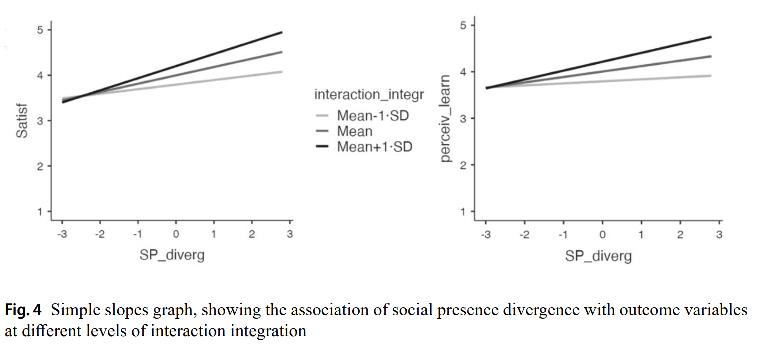In the area of online learning and distance education, social presence is considered a key concept to understand interpersonal processes that are mediated by technology. At the same time, theory surrounding social presence remains underdeveloped. For example, under which conditions is social presence particularly important? Do students always need high perceptions of social presence in their learning experiences? A strong theory should provide tentative answers to questions like these. Yet, as of now, our knowledge is mostly restricted to correlations coefficients between measures of social presence and outcome variables like satisfaction. Without further nuance, learning designers do not know under which circumstances they should prioritize designing for interpersonal aspects or instead focus on other aspects.
To advance a more nuanced understanding of social presence, Joshua Weidlich, Derya Göksün, and Karel Kreijns investigated two contextual variables that may help explain when and how social presence may be most beneficial. Their empirical study, published in the Journal of Computing in Higher Education, looked at the explanatory value of these two variables in a sample of N=305 Turkish teacher education students.
The first variable, social presence divergence, posits that the benefits of social presence are not monolithic but instead depend on the degree of social presence students would have liked. This yields three distinct scenarios: too little (divergence 1), too much (divergence 2), and just the right amount of social presence (convergence). So far, the literature has only focused on the first scenario and failed to account for learning experiences where there was too much or just the right amount of social presence. We hypothesized that accounting for preferred levels of social presence would explain associations with outcome variable above and beyond perceptions of social presence.


As a second source of nuance, interaction integration further considers that learning experiences differ in their degree to which they require functioning social interaction to achieve learning goals. Interaction integration is very high in computer-supported collaborative learning and rather low in individual learning scenarios which only distally make use of social interaction. We hypothesized that social presence convergence would be particularly important in scenarios with a high degree of interaction integration, thus yielding a moderating effect of interaction integration on the association between social presence divergence and subjective outcomes, e.g. satisfaction.

Finding support for our main hypotheses, the paper concludes with implication that arise from these findings, both for further theoretical development but also for online teaching practitioners wanting to take interpersonal aspects into their instructional design.
Suggested citation:
Weidlich, J., Göksün, D.O. & Kreijns, K. (2022). Extending social presence theory: social presence divergence and interaction integration in online distance learning. Journal of Computing in Higher Education. https://doi.org/10.1007/s12528-022-09325-2
